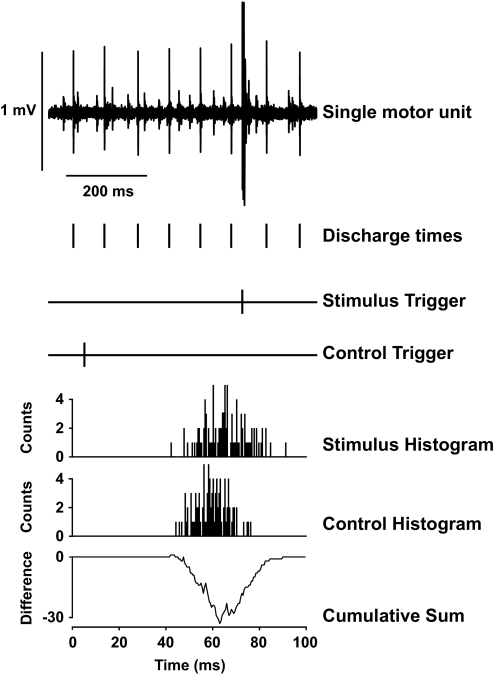FIG. 4.
The influence of spike-triggered stimulation applied to the nerve innervating the brachioradialis muscle on the discharge of a motor unit in biceps brachii. The single motor unit discharged action potentials at 10.6 pps, and the stimulation was delivered at 30 ms after a randomly selected discharge time. The interspike intervals during stimulation and control conditions (n = 100 each) were used to construct the poststimulus time histograms. The cumulative sum procedure was applied to the difference between the stimulation and control histograms; the negative deflection denotes an inhibitory effect of the stimulation that prolonged the time to the next discharge of an action potential by the motor unit.

